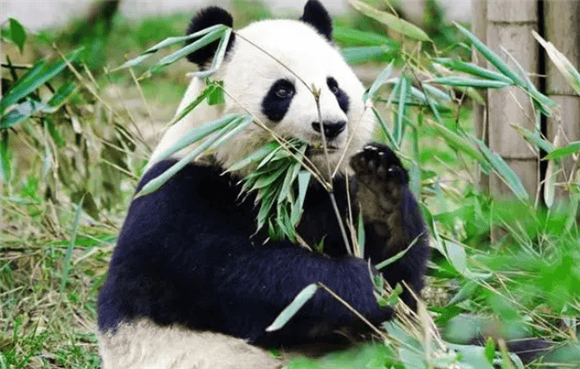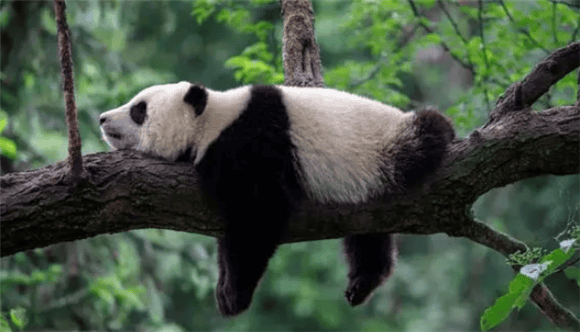★ Giant pandas can lower their metabolism to cope with the cold winter, but they do not have the habit of hibernating.
★ Eating more and consuming less are the magic weapons for giant pandas to survive the cold winter.
Giant pandas, the national treasure, are cute and naive and are loved by many people. Whether it is at the panda research base or in zoos everywhere, as long as they are around, there is no shortage of fans to worship and watch. As the weather gets colder and colder, many people have discovered a problem: It is said that giant pandas and bears are related. Bears hibernate in winter. Why are we giant pandas still eating, playing, responsible and cute as usual?

01
Hibernation is a "little animal". "Habit"
First of all, one thing needs to be explained: not all bears hibernate. In order to adapt to low-temperature weather, giant pandas have low metabolism, but they do not have the habit of hibernating.
Picture insect creativity
In order to cope with the harsh natural environment and reduce energy consumption, some animals such as hedgehogs, marmots and other warm-blooded animals will relax the regulation of the body's constant temperature and change body temperature and metabolism. The heart rate, heart rate, etc. are all reduced to very low physiological levels, and they enter a state of lethargy that lasts for several months. This is hibernation; some animals also enter a state of lethargy in response to the heat of summer, which is called aestivation. There are also some animals, such as bats and hummingbirds, which will enter a lethargic state due to lack of energy in various seasons. This phenomenon is called diurnal torpor.
Generally hibernating animals are relatively small animals, and large animals rarely hibernate to survive the season of food shortage.
02
The hibernation of large carnivores is actually "winter sleep"
The hibernation of large carnivores, bears, is an interesting phenomenon. For example, when black bears hibernate, they do not eat, drink, urinate, or defecate. Although their body temperature drops, the decrease is not significant, to approximately 32-33°C. They can wake up at any time when disturbed. What’s even more interesting is that bears also raise their young during hibernation. Some scholars believe that this phenomenon in bears is the hibernation phenomenon of carnivores, not true hibernation.
According to research, the emergence of giant pandas has a history of 8 million years ago. Under the pressure of the last ice age of the Quaternary Period about 10,000 years ago, the "giant pandas" that once flourished in the same period -Most members of the "stegodon fauna" have become extinct, so giant pandas are also known as "living fossils".
Picture insect creativity
Giant pandas belong to the carnivorous order Ursidae in terms of systematic classification, but their food habits have been highly specialized to feed on bamboo. Judging from the anatomical characteristics, the digestive tract of giant pandas is still basically the morphological structure of carnivores. However, in order to adapt to the habit of eating bamboo, some corresponding changes have also occurred, especially changes in intestinal microorganisms, which can help them digest and decompose fiber. However, the overall structure of the digestive tract is similar to that of carnivores or omnivores, such as the relatively short intestine, simple structure, and no cecum.

03
Eating a lot of food can help reduce metabolism Pandas survive the winter safely
The digestive physiology of giant pandas is also very special: although their staple food is bamboo, due to reasons such as the structure and function of the digestive tract, the utilization efficiency of bamboo is very low. It is reported that the digestion efficiency of bamboo by giant pandas is only 17%. At the same time, the residence time of food in the digestive tract is relatively short, only about 8-9 hours, so giant pandas eat a lot of food every day. According to relevant research, a giant panda will eat about 10-20 kilograms of bamboo every day.
Tu Chong Creativity
Eating in large quantities, passing food quickly through the digestive tract, and with the help of intestinal microorganisms is a strategy for giant pandas to obtain energy and nutrition. At the same time, giant pandas also have the ability to maintain low metabolic levels, so they require less energy to maintain their own survival and daily activities. The activity level of giant pandas in the wild is very low. This characteristic can also be seen in zoos. Giant pandas always move very slowly, and their lazy appearance also increases their cuteness. Morphologically, some energy-consuming organs of giant pandas, such as the brain, liver, and kidneys, also tend to shrink.
The giant pandas need to eat constantly and have low energy demands and losses. These giant pandas’ long-term evolved survival strategies determine that they can survive the winter safely without hibernation.

 扫一扫微信交流
扫一扫微信交流
发布评论